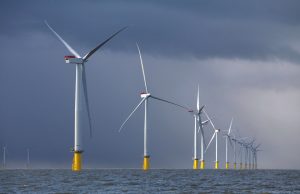More often than not, infrastructure investments have provided investors with predictable, low maintenance options. Coupled with prosperous, stable returns throughout moments of turbulence, these investments give advantageous options for investors to consider.

Over the past few years, the ongoing reverberations from the COVID-19 pandemic can be still being felt today. The combination of rising interest rates, increasing inflation and diminishing equity markets has led to a degree of chaos in recent months adding to the foreboding risk of recession. Due to the nature of their investments, infrastructure funds are seen as better equipped to weather these turbulent aftershocks than some of their counterparts.
Infrastructure funds predominantly invest in public assets such as electric, water and sewage services and provide utilities that the general public depend on to live, work and travel.
Such investments include numerous utilities used to keep society running like roads, pipelines and water treatment facilities. Amenities provided by public infrastructure present people with the means to power homes, digitally communicate and transport commodities.
Consequently, infrastructure helps to link a society and by doing so, offers a foundation for economies to not only are built upon but to develop at a rate which reflects the essential needs of the general public.
Infrastructure assets are often effective at offering a degree of protection against inflation. Over the past years, recent constrains put on supply chains have contributed to the increasing rate of inflation. However, public amenities impacted by infrastructure investment such as freight shipping, telecom communications and rail transport are playing an essential part in mitigating the impact inflation has.
There are also certain services provided by infrastructure investing which are indispensable, irrespective of economic fluctuations. For example, considering our reliance on water and gas utilities, it is doubtful that society will stop using these assets on a daily basis anytime soon. Therefore, the cost of these assets can be normally increased alongside the rate of inflation without severely impacting demand.
Infrastructure investing is also not only impactful on just a national level. In recent years the global infrastructure sector has steadily grown, as international economies adjust to accommodate the ever-changing geo-political landscape. Infrastructure is crucial in assisting economies to tackle such issues as the increasing global population or adapt transition to net zero carbon neutrality as set out by The Paris Agreement.
The rising demand for renewable resources, need for energy transition and increased government funding have meant that energy infrastructure in particular has done well over the past year. Additionally, marine assets have also performed well due to the essential role they played in transporting goods as consumers adhere to travel restrictions.
In recent years, as the demand for a digitally connected society increases, so has the public requirement for an infrastructure that supports it. Network aspects such as integrated online connectivity and high band width were increasingly required in response to the unfolding pandemic restrictions, as remote working was adopted internationally. As such, 5G broadband cellular network has been integrated by network providers to accommodate societal demands, bringing with it the rising need for data centres and cell towers, both of which are significantly impacted by infrastructure investment.
Additionally, the amounting concern over climate change has provided investors with another ESG investment avenue to explore regarding infrastructure investments. A result of the expanding cultivation of renewable energy resources is likely to require a greater amount of funding for solar or wind farms.
Despite the growth infrastructure has experienced in recent times, it is often not considered by some investors who are unaware of the potential this sector possesses. Admittedly, infrastructure can sometimes be difficult to both value and to invest in. However, there are means by which to do so which have the potential to offer interesting and profitable opportunities.
Therefore, due to infrastructure’s relatively steady income payments and inflation-correlated assets, it has become an increasingly popular holding in a diversified portfolio. It is easy to see why investments in infrastructure are key for economies to grow both now, and in the future.
By Theodore Rouse
Take a look at the Seymour Sinclair Positive Impact Portfolio to benefit from infrastructure.




